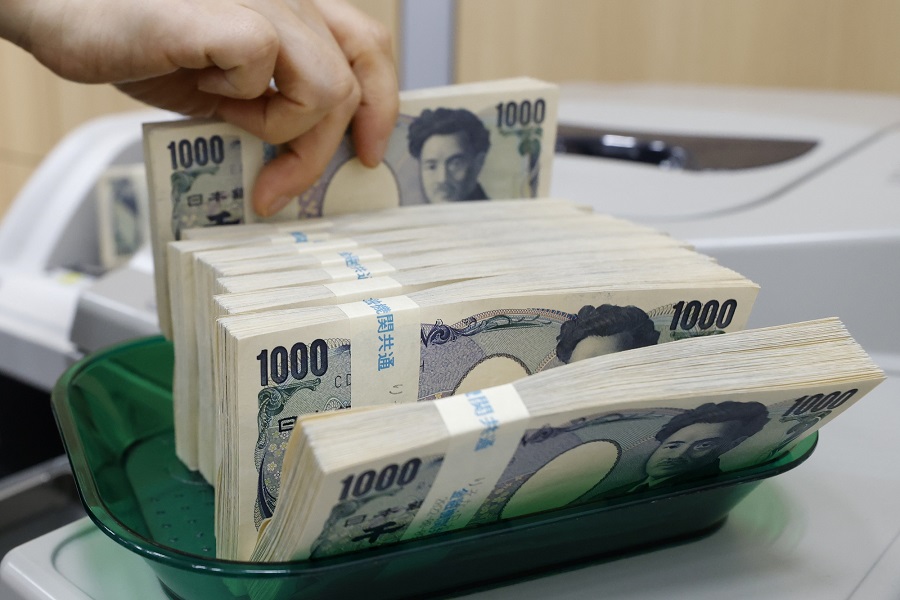Is the yen still a safe asset?
Matsuo Kanda, Japan’s Vice Minister for International Affairs, and the lead government spokesperson on the yen said just recently that the currency is still perceived as a safe asset.

There is also little sign that the recent tensions in Israel and Gaza are likely to lift the Japanese currency.
>> Which currencies stand to gain from geopolitical conflict?
But that seems a bit hard to believe given the way that the yen has fallen through some significant adverse events in recent years such as the pandemic and the war in Ukraine. There is also little sign that the recent tensions in Israel and Gaza are likely to lift the Japanese currency. So has the yen’s safe asset status been lost, and does this leave the dollar and Swiss franc to reap the rewards?
“To our way of thinking, we regard this ‘safe asset’ or ‘safe haven’ description at a bit of a misnomer. Of course, there is a history that shows certain currencies like the yen, Swiss franc and dollar do get stronger in periods of heightened tension. But do these currencies rise because traders and investors want to hold a safe asset?”, said Mr. Steve Barrow, Head of Standard Bank G10 Strategy.
Mr. Steve Barrow doesn’t think so. Instead, he thinks it is all about the financing of positions. But it is a bit different between the various currencies. For a start, he believes that the yen and Swiss usually appreciate during risk-off events because these are the currencies that usually fund carry trades. In other words, the yen and Swiss franc are sold to buy higher-yielding currencies during periods of stability (or risk-on periods) but investors scramble to buy back these currencies when the risk mood deteriorates and higher yielding currencies, particularly in emerging markets start to weaken.
Hence there’s no real “safety” issue here, just a covering of carry trades. The US dollar is slightly different because while it acts as a funding currency as well, with the dollar often shorted for other higher-yielding currencies during periods of stability, there’s also a large role for the US dollar to fund financial transactions that are not part of the carry trade. This is why major central banks have dollar swap lines with the Fed. It is because periods of really intense risk aversion, as we saw in the early stages of the pandemic, for instance, create such demand for the dollar that the Fed has to supply large amounts of dollars in order to prevent a crisis-inducing dollar shortage.
This is why we feel that relatively modest bouts of risk aversion, like that we are seeing right now, can cause the dollar to slip against the other safe currencies but, when really dramatic risk aversion develops, it is usually the dollar that gains the most. But note, this is not because the dollar is seen as safer, but because the dollar’s funding role is much greater and comes to the fore in these really intense risk-off periods.
>> What are the prospects for major currencies?
If we look at this year so far we see that one “safe” currency, the Swiss franc, is the best G10 performer, while another, the yen, is the worst. The dollar lies close to the top of the table, but still behind the franc. The yen’s weakness is arguably of some surprise. It has lost nearly a quarter of its value since the end of 2019 which is significant when you think that we’ve had Covid, the Ukraine/Russia war and now the Israel/Hamas conflict in this period. Why might this have happened?
It might seem particularly odd in recent years as the Fed and others have hiked rates, while the BoJ has held policy rates stable. For this widening rate differential increases the return from overseas bonds for Japanese investors, but only if they shift from hedged foreign currency purchases to unhedged. And if there has been this shift we might expect any risk-off events to lift the yen sharply as those short of yen in the spot or forward market scramble to buy back the Japanese currency.
But it might be that the lack of strength in the yen right now shows that Japanese investors have actually been quite shy of overseas bonds, even if yields are high, perhaps because they are uncomfortable leaving the currency exposure unhedged. Whatever it is, the weakness of the yen would seem to suggest that we can forget about the yen as a safe asset although, as we said at the start, the term “safe” may be a misnomer in the first place.








